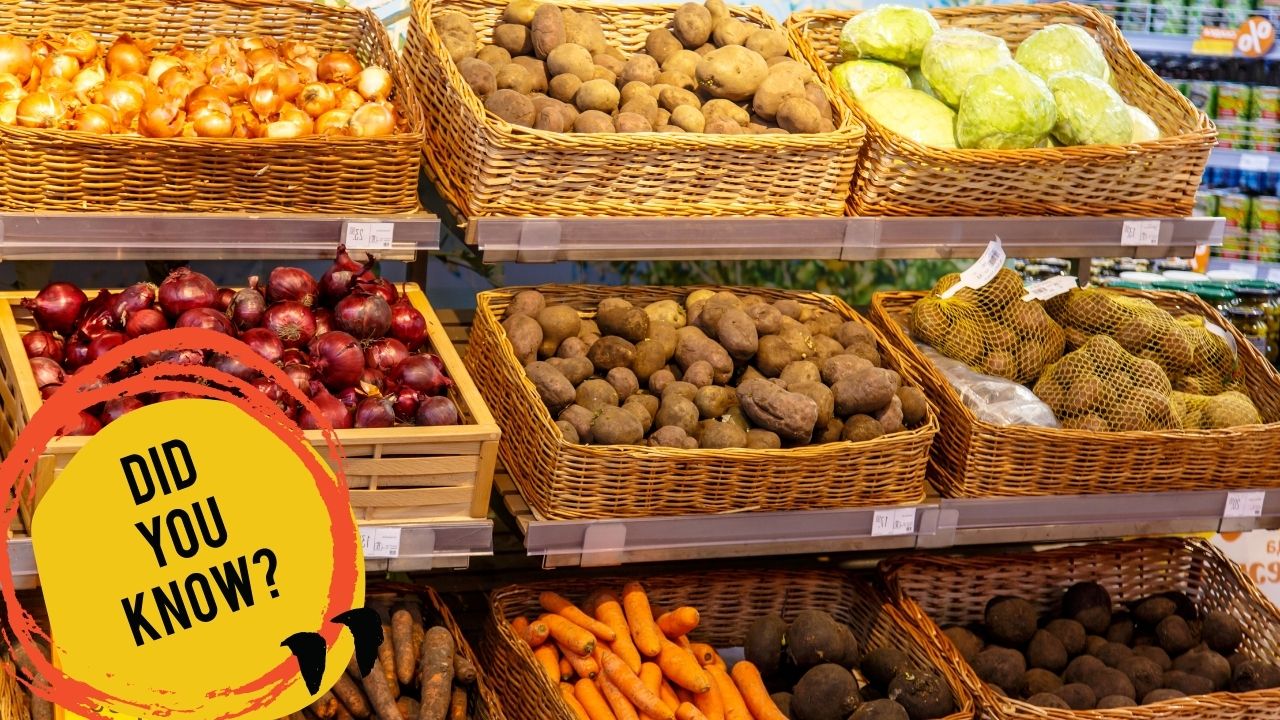While some Americans neglect vegetables, others consider vegetables to be an important part of a healthy diet and eat them every day. However, the most popular vegetable in the United States is not necessarily the healthiest option.
I’ve compiled a list of the most consumed vegetables across the US. Although different sources give slightly different statistics, the following is a pretty accurate representation of America’s eating habits in recent years when it comes to vegetables.
But before we get into the most popular veggies in America, can you guess which ones are the most hated?
Brussels sprouts and parsnips are the most hated vegetables in America. Although very nutritious and tasty if cooked right, multiple surveys found Brussels sprouts and parsnips to be two vegetables that the survey participants universally disliked.
So which 10 are the most eaten vegetables in America?
1. Potatoes

Yes, the good old spud. Potatoes are the most consumed vegetable in America by far. They have been a top contender among tomatoes, broccoli, and carrots for years.
In 2019 worldwide potato consumption reached an all-time high of 370 million metric tons, and Asia, Ukraine, and Russia are responsible for consuming almost half of the world’s potato supply. Just about 311,000 acres of Idaho potatoes (which is about 6500000 tons or 13 billion pounds) are harvested each year. You can fill 500 football stadiums 10 feet high with that amount of spuds [1], [2]!
An average American eats about 121 pounds (55 kg) of potatoes every year, which roughly equals 550 potatoes per person per year or 45 potatoes a month.
Potatoes are given their popular ranking position in the US because of their versatility; they can be prepared fairly quickly, they are filling, and they are not too expensive.
After rice and wheat, potatoes are the third most important food crop globally and, according to Statista, are primarily grown in China, India, Russia, and Ukraine, with America being the fifth largest market for potato production.
You can mash, boil, bake, roast, and make French fries or thick-cut chips with them or scallop them, turn them into wedges, and much more. Your options are limitless with potatoes.
As a high source of fiber and antioxidants, potatoes are good for us, but in moderation. Eating one or two medium-sized baked or steamed potatoes every day can be good for a healthy diet. Eating too many French fries or potato chips, however, could have some unwanted health effects.
2. Tomatoes

I know what some of you are thinking, tomatoes are fruit, right? For the sake of this article, I’m choosing to side with the “tomatoes are a vegetable” side of the fight.
While tomatoes are only the second most consumed vegetable in America, they are the most popular vegetable in the world.
There are currently more than 400,000 acres of tomatoes produced in the US alone, and that’s to cover the overall tomato market, including salsa, sauces, ketchup, soups, and more. This makes the US one of the leading manufacturers of fresh tomato production, with the state of California leading the way.
According to the USDA, each American eats approximately 31 pounds (14 kg) of tomatoes each year. That equals about 90 tomatoes per person per year or 7.5 tomatoes each month [3].
Tomatoes are rich in an antioxidant called “lycopene,” which is good for the heart and may help fight against some cancers by protecting your cells from damage. Lycopene is also what gives some tomatoes their bright and shiny red skin.
3. Onions
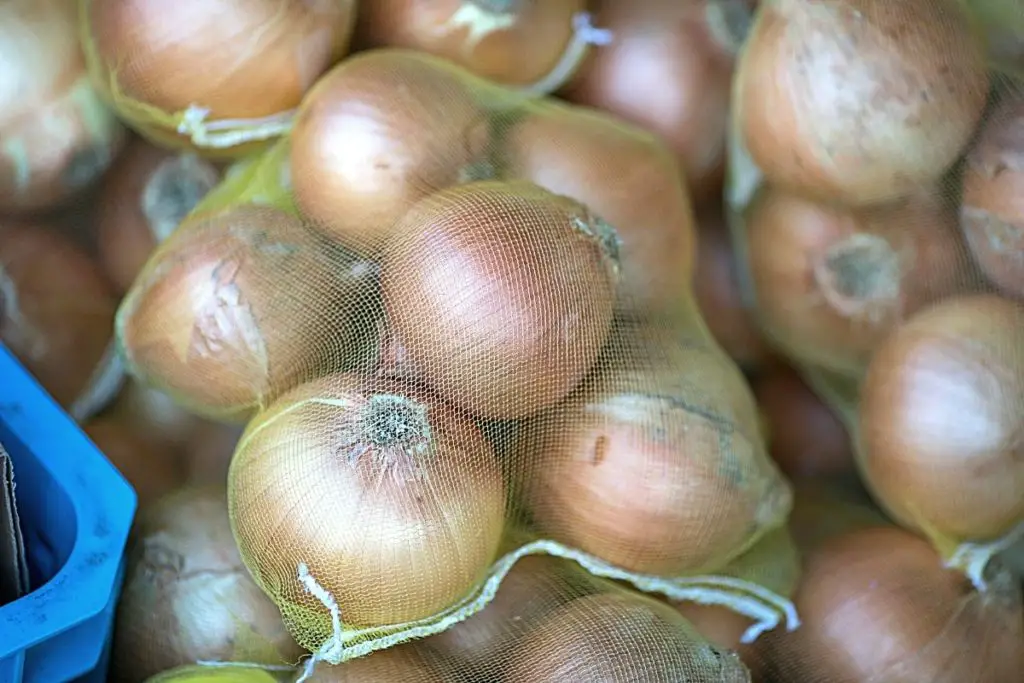
These strong and sharp-tasting layered bulbs are the 2nd most popular vegetables in the world. Each year, there are 93.17 metric tonnes of onions grown globally.
The US is the third onion producer globally, right after China and India, so it is not surprising that onion is the third most eaten vegetable in America.
Onion consumption in America has increased 79 percent over the last 30 years. Hence, the average American eats 22 pounds (9.97 kg) of onions per year. That is about 80 medium-sized onions per year for an average American, which is 6.6 onions a month [4].
Also, 93 percent of restaurants in America use onions in their menu items. Americans eat onions in dishes like onion rings and French onion soup or just added as a flavor to soups, stews, and other meat dishes.
Onions are full of minerals, fiber, and vitamins. Onions are a good choice of vegetable for those following low-carb and low-calorie diets as they are low in carbs and calories.
4. Bell Peppers
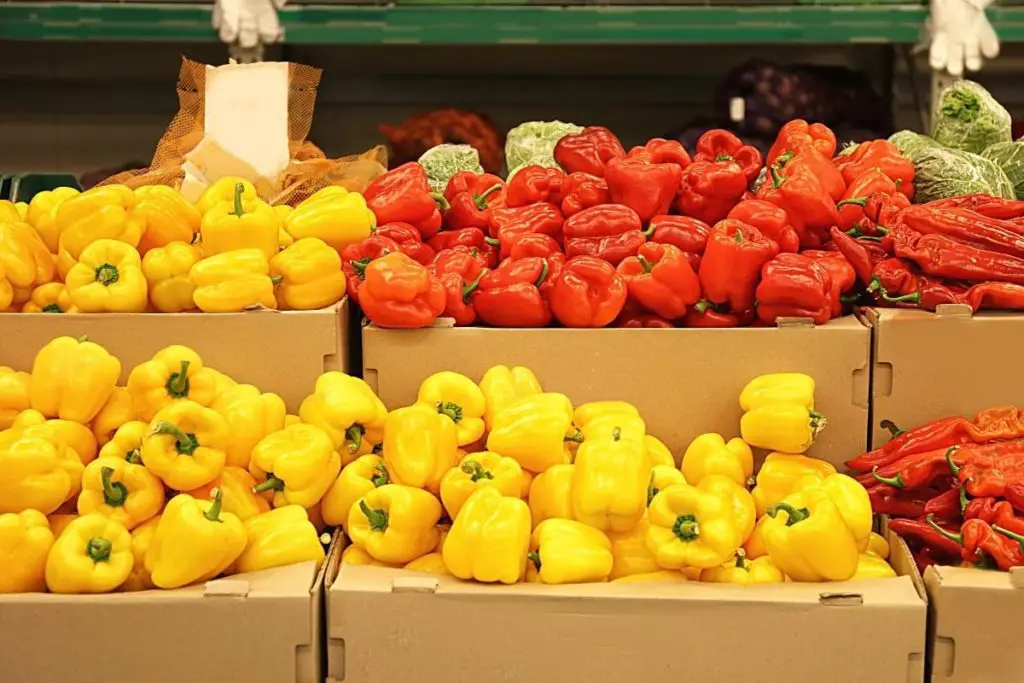
They’re bright, shiny, and colorful, and although they’re all very nutritious, the red ones are the best ones for us because they stay on the vine longer and get filled with more nutrients.
Also called sweet peppers or paprika, bell peppers are cousins to chili peppers and tomatoes. They can also be eaten raw or cooked.
Most bell peppers in the United States are grown through a drip irrigation and mulch system on raised beds in open fields. Although bell peppers are widely grown throughout the US, Florida, and California lead the way in bell pepper production, with Georgia and Michigan following close behind.
Asia produces over 70% of the global bell pepper market, followed by Mexico, Indonesia, Spain, Turkey, and the US.
Although the US is a large producer of bell peppers, Mexico is proving to be a strong competitor, and bell pepper acreage in the US has slowly been declining since 2000. Mexico is now the largest importer of bell peppers to America, accounting for approximately 72% of bell pepper imports in the US [5].
The peak season for Bell peppers runs from July through September, but they are available in supermarkets all year round.
An average American eats about 11 pounds (5 kg) of bell peppers each year, which equals about 55 peppers a year for an average American.
Bell peppers are mostly used in savory dishes, stuffed salads, or eaten on their own. They are also a popular pizza topping and are often used in omelets and antipasto.
Bell peppers are high in antioxidants and low in calories. They are mainly made up of water and a small number of carbs with some fiber, so they are ideal for a healthy diet and weight loss and are considered keto-friendly.
5. Lettuce
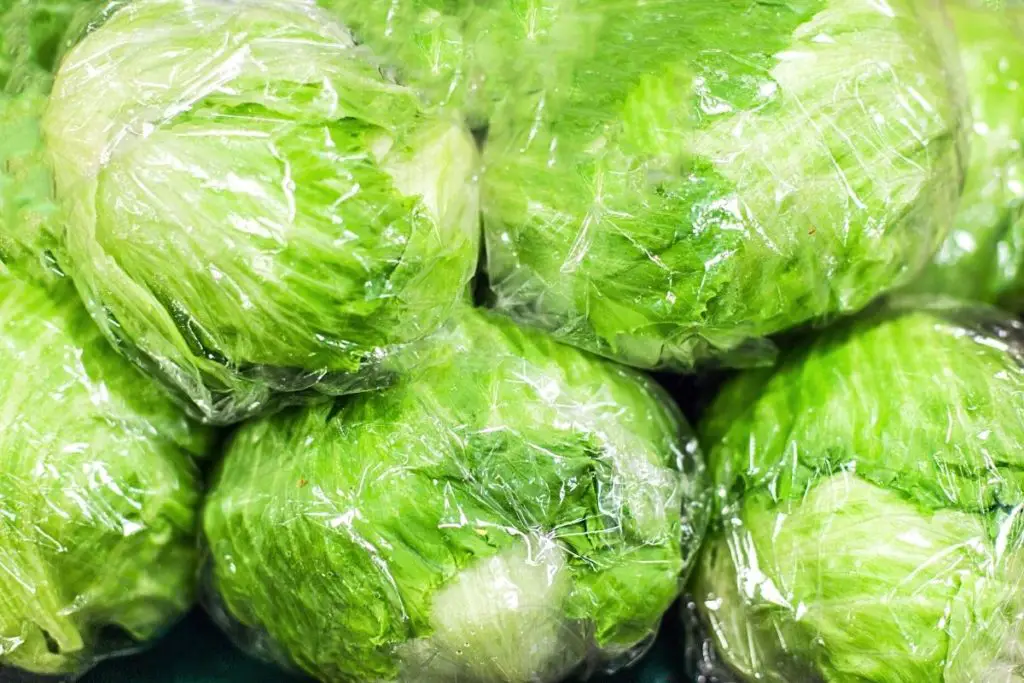
I know many of us “don’t make friends with salad,” but there must be quite a lot of lettuce fans in America to help this leaf vegetable land in fifth place on the list.
Lettuce is mainly made up of water, just like the human body. Because water makes up over 95% of raw lettuce, it can keep you hydrated while also improving your eyesight, sleep, and bone strength.
A healthy lettuce diet might be the reason your pet bunny rabbit is so full of energy.
Lettuce is produced in the US all year round, and California grows around 71% of America’s lettuce produce, including iceberg and romaine varieties, while Arizona grows just over 20% of America’s lettuce crop [6].
According to the food statistics, the consumption of lettuce in the US has slowly grown from 8.4 pounds in the year 2000 to 14.42 pounds (6.5 kg) in 2020 per capita. That is about 22 heads of lettuce per person per year.
According to the Consumer Perishables Databook, Romaine lettuce is the most consumed lettuce in the US, with 43 percent of total annual lettuce sales, while Iceberg lettuce is in the second place, with 37 percent of total lettuce sales.
Lettuce is most often used for wraps, sandwiches, and salads, as well as in soups or even grilled.
6. Carrots

If your parents once told you that eating too many carrots can turn your skin orange, they weren’t technically lying. Foods high in beta-carotene, when eaten too much, may really cause a yellowish discoloration of your skin.
I don’t know if that interesting fact is a help or hindrance to making carrots land in sixth place on the list.
Other than turning you into a walking carrot, carrots are one of the healthiest vegetables in the world.
Carrots have a fair amount of vitamin A, K, and Calcium and are considered important veg for bone health and managing sugar levels; along with other foods high in vitamin A, they can improve your eyesight.
In the USA, there are about 1497670 tonnes of carrots consumed every year. While over 90% of the carrot production in America is grown in California, Texas, Washington, Michigan, Florida, Colorado, and Wisconsin, 85% of the overall carrot production is grown in California, with approximately 66,580 acres of produce.
According to Statista, in America, there were 7.71 pounds (3.5 kg) of carrots eaten per person in 2020, which is significantly decreased over the years [7].
Carrots are mostly eaten raw, boiled, roasted, steamed, or as an ingredient in soups and stews, and yes, in carrot cake.
Grimmway Farms in California is one of the largest growers, producers, and shippers of carrots worldwide.
7. Broccoli
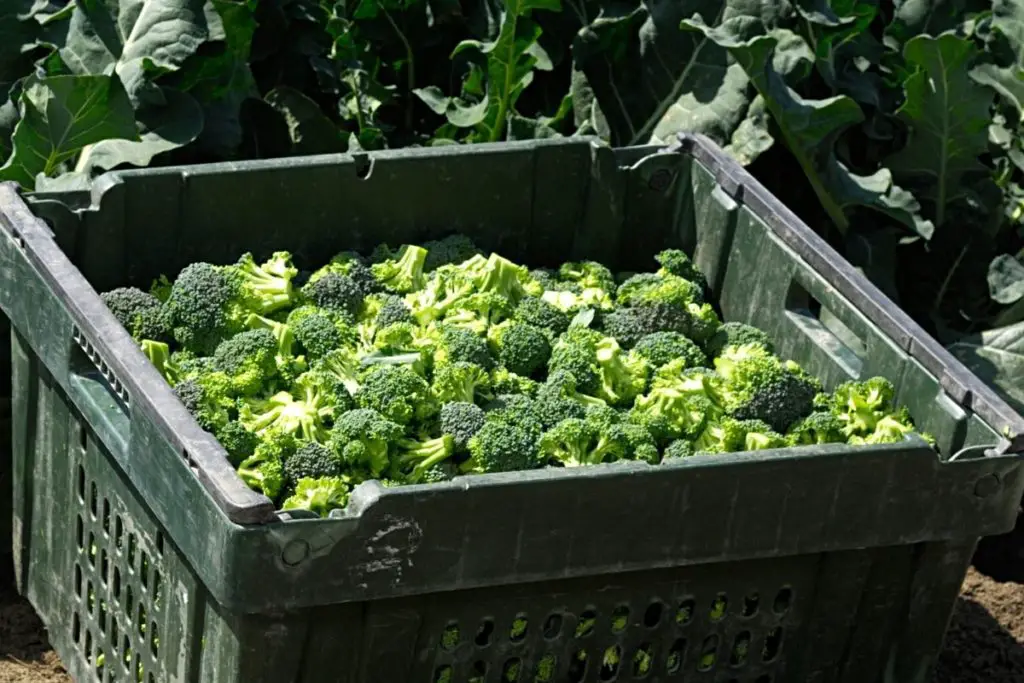
Broccoli is third on the list of the healthiest vegetables worldwide and has time and time again been voted as a favorite vegetable for consumption in America but never made the top of the list for most consumed.
Using around 130,000 acres of land predominantly in California, Arizona, Texas, and Oregon, the US harvests and sells most of its broccoli crops as fresh produce.
According to the Statista report and the Department of Agriculture, an average American ate approximately 5-6 pounds (2.7 kg) of broccoli in 2020.
If you are struggling to include enough broccoli in your diet, then check out these easy and healthy broccoli smoothie recipes here.
However, if you are the one eating too much broccoli, then you might want to read my latest post here: How Much Broccoli To Eat Per Day? (How much is too much?)
Although broccoli has been around for over 2,000 years, this green, tree-looking vegetable was only introduced to the US in the early 1900s by Italian immigrants.
Like many other crops in America, most of the broccoli produced (approximately 90%) is grown and harvested in California. Around 20% of America’s broccoli harvest is exported to Canada, Taiwan, and Japan annually.
Consuming broccoli regularly could prevent chronic diseases because it’s loaded with nutrients, vitamins, potassium, and sulforaphane. All of which improve eyesight, and heart health, prevent cell damage, and boost your immune system.
Basically, if you’re feeling under the weather, adding broccoli to your diet might just perk you up enough to get you back on your feet.
8. Cucumber

Scientifically, cucumbers are considered a fruit because they grow from the bud of a flower. However, they are mostly used and eaten as a vegetable, especially in the US.
There are over 100 varieties of cucumbers, and they can be grown on the ground, on poles, or on trellises.
America is the fourth-largest producer of cucumbers, behind China, India, and Russia, and Florida is the leading state for cucumber production, using approximately 200 to 900 acres of land annually.
According to different sources, the U.S. annual consumption of fresh cucumber per person per year is about 2.2-7.2 pounds (1-3.2 kg), which is about 4-12 cucumbers for the average American per year.
As well as tasting great in salads and sandwiches, cucumbers have multiple health benefits, including promoting hydration, lowering blood sugar, and, according to Healthline, possibly aiding in weight loss [8].
One small cup of cucumber can give you up to 19% of the recommended daily vitamin K intake, which assists the body in supporting healthy skin, bones, and cardiovascular health.
Cucumber is used in numerous skin products because of its anti-inflammatory properties that help relieve heat rash and skin burns and retain hydration in the skin. Plus, it has an extraordinarily refreshing scent.
9. Celery

Beating sweetcorn, garlic, green beans, sweet potato, and celery makes it to 9th place on the list of most popular vegetables consumed across America.
California is, again, the leading state for growing and producing the most celery in the US, accounting for approximately 80% of America’s celery supply [9].
Again, different sources give us different figures, but on average, the consumption of fresh celery per person from 2000 to 2020 in the United States was between 2.8-5.66 pounds (1.2-2.5 kg). That amounts to approximately 24-45 medium-ribbed stalks of celery per person per year.
Celery is mostly eaten raw as a crunchy snack but is also used to season beef stew, soups, savory cocktails, and crisp salads.
Celery needs cooler climates and temperatures to grow sufficiently, so growing in greenhouses rather than fields is often the case. They also require a lot of moisture in warmer weather and good soil drainage and nutrition.
Celery is exceptionally high in antioxidant compounds, which are found in what we call “superfoods” like blueberries and chia seeds. Antioxidants work to protect our cells from weather damage, exposure to chemicals, polluted air from cigarette smoke, etc.
10. Mushrooms
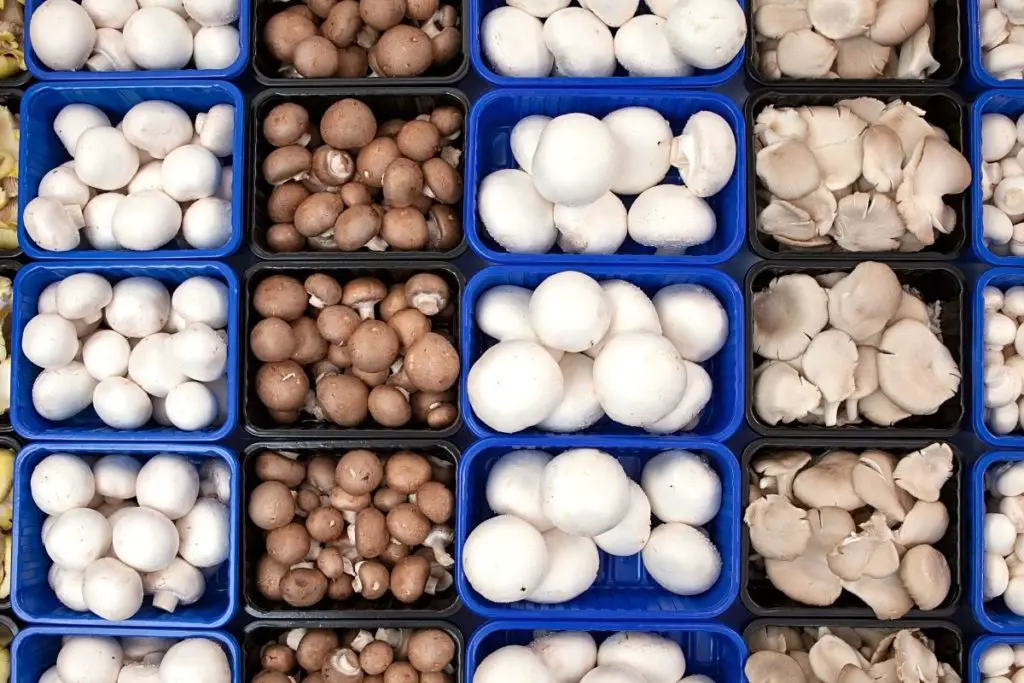
Technically mushrooms are not plants but part of the organisms called fungi, but since they are classified as vegetables, they make it the tenth and last place on the list.
Mushrooms can be categorized into four groups:
- Saprotrophic
- Mycorrhizal
- Parasitic and
- Endophytic
And while there are approximately 14,000 species of fungi that produce mushrooms in these categories, not all of them are safe to eat.
The safest and most popular mushrooms eaten in the US are white button mushrooms (Agaricus bisporus) which take up almost 90% of the mushrooms we eat.
According to the USDA (U.S. Department of Agriculture), an average person in America eats around 3 pounds (1.4 kg) of mushrooms a year. That is about 60-70 fresh button mushrooms eaten by an average American each year.
According to some health research, eating mushrooms are important for a healthy immune system. Mushrooms are a good source of many minerals and vitamins, dietary fiber, and also plant-based protein. However, some mushrooms should not be eaten regularly, and some not at all. Mushrooms sold in grocery stores are typically fine for consumption.
Most commonly, mushrooms are eaten dried, cooked, or raw. White button mushrooms are often used as a pizza topping or added to soups and salads. Portabella mushrooms are a popular ingredient in Italian cuisines, added to pasta dishes and sauces.
Also, there is an up-and-coming health and wellness trend blending mushrooms into your morning brew. Read more about it here: How To Make Bulletproof Mushroom Coffee?
Nine Fun Vegetable Facts
- While it’s great to know which vegetables are the best ones for you and what their health benefits are, sometimes knowing a few random and “useless” facts about vegetables can teach us more about why they’re the most consumed vegetables in America and in some instances, the world.
- A study conducted by Green Giant in the first half of 2021 showed that out of the 5,000 people surveyed, broccoli was chosen as the favorite vegetable among US consumers.
- Although spinach is one of the healthiest vegetables in the world, it doesn’t even make the top 10 list of most consumed vegetables in the US.
- Over 177.04 metric tons of tomatoes are produced worldwide every year. That’s 390,306 lbs or 177,040 kg, which is the equivalent of the weight of an Antarctic blue whale or 33 elephants.
- According to the United States Department of Agriculture (USDA), approximately 40% of the food supply in the US is wasted every year. American food waste annually equates to approximately 130 billion meals and over US $ 408 billion thrown in the bin.
- There are over 10,000 varieties of tomatoes in the world; most are produced in China. How many can you name?
- Onions have been known to man since the bronze age (3,300 BC) and grow on nearly every continent.
- Celery was once used in ancient Chinese medicine to treat arthritis, insomnia, and toothaches and purify the blood.
- The most poisonous mushroom in the US is the Amanita phalloides, also known as the death cap. They grew as wild mushrooms along the West Coast and the Northeast and were brought into America by accident.
Read Also: Staggering Amount Of Food an Average Person Eats In a Year!
What Are The Healthiest Vegetables In The World?
While they are generally healthy and good for us, the abovementioned vegetables mostly consumed in America are not the healthiest vegetable options to go with if you’re concerned about your well-being, weight management, and overall health.
Some of the healthiest vegetables in the world (not in this order) are:
- Spinach
- Carrots
- Broccoli
- Asparagus
- Garlic
- Ginger
- Brussels Sprouts
- Kale
- Green Peas
There are many more popular vegetables that Americans love to eat, like sweetcorn, cabbage, cauliflower, beetroot, asparagus, and so on. For more food industry data and statistics, check out these 10 Best Food Industry Statistics And Data Websites.
